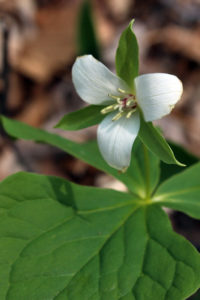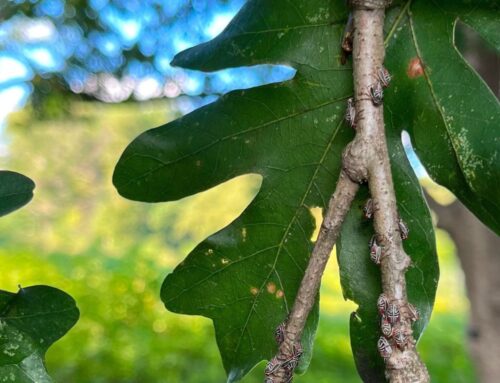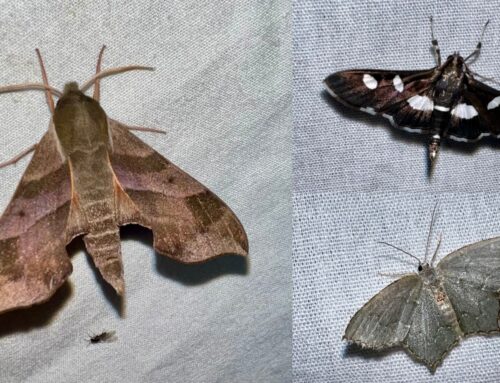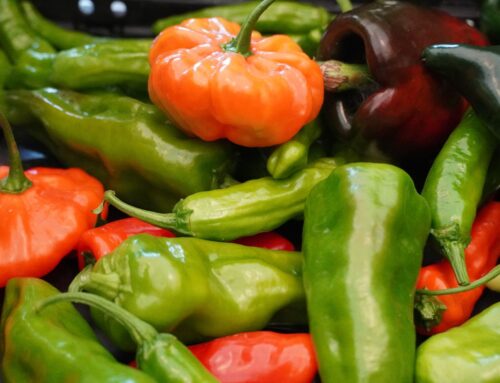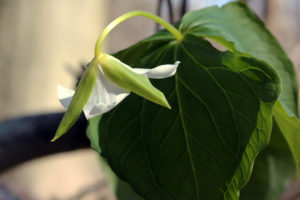
Have you come across small fenced-in areas along the Minshall Trail (white blazes) just outside gate two or along the Dismal Run Trail (orange blazes)? Chances are you have come across what we call “Dick’s Trilliums.” Mr. Richard (Dick) Cloud is a long-time Tyler volunteer and you may know him from the weekly and monthly wildflower walks, night hikes, or other activities.
We call them “Dick’s Trilliums” because Mr. Cloud found them and personally saw to protect them from deer browse by placing a fence around them. Since then, this patch has increased greatly and some are now found outside of the protective fencing. Some of these trilliums have been relocated to the North Woods and along the Native Woodland Walk near the pawpaw trees.
You should visit them this month. Trilliums are spring ephemerals. Ephemerals are woodland plants that become active early in spring or late winter. They bloom, produce seed, and complete a season life cycle while the light is abundant on the forest floor before the tree canopy closes, cutting off the sunlight.
Want to know more?
Trillium (also known as red trillium, wake-robin, and stinking Benjamin) is a genus of plants once abundant in our area, but now hard to find due to habitat loss and severe over-browsing by deer. Flowers and other parts of the plant appear to be in threes, and depending on species, will be white to chocolate and burgundy in color. Trilliums are fragile, long-lived and grow very slowly. If you come across these rare beauties, please do not leave the trail to approach or pick them. Even one wrong step can cause damage to the rhizome, resulting in death.
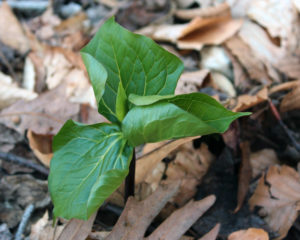
In the first few years, this ephemeral will produce one leaf, then the characteristic three-part leaves appear as it matures in the next few years. Most people see one green blade and mistake that as grass. It might take 10 or more years for trillium to produce a flower. Trilliums spread slowly with the assistance of ants. The seeds have a coating of nutritious, fatty substances called elaiosome. Ants harvest the seeds with the elaiosome and feed the elaiosome to their larvae. The seeds are disposed in the waste area of their nest mound.
Here among ant droppings and other wastes, trillium finds a nutritious environment to grow. The number of species of Trillium is widely disputed as natural inter-species crosses occur. At Tyler, you may find white flowering trillium with unknown parentage near gate two and some native nodding trillium (Trillium cernuum) along the Dismal Run Trail. Look for their blooms in late April and May.
